www.peppergreenmedia.com
nEWS
28 DEC 13
Tickets On Sale Now for "I am an Opera" January 11-25
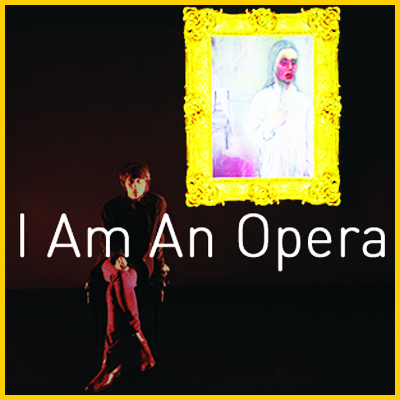
Tickets are now on sale for the next run of "I am an Opera" by Joseph Keckler (the Village Voice named him Best Downtown Performance Artist, 2013).
Performances run from Jan. 11th through the 25th at Incubator Arts in NYC. http://incubatorarts.org/iamanopera.html
Written, composed, and performed by Joseph Keckler
Directed by Uwe Mengel
Video in collaboration with Ned Stresen-Reuter and Laura Terruso
Featuring musical arrangements by Dan Bartfield and Patrick Grant
23 DEC 13
TILTED AXES Photo Set
![]()
Photo set by Erick Gonzales at:
http://www.flickr.com/photos/eeeksnyc/sets/72157638962411943/
11 DEC 13
TILTED AXES Promotional Video
02 DEC 13
Patrick Grant Interview in I CARE IF YOU LISTEN
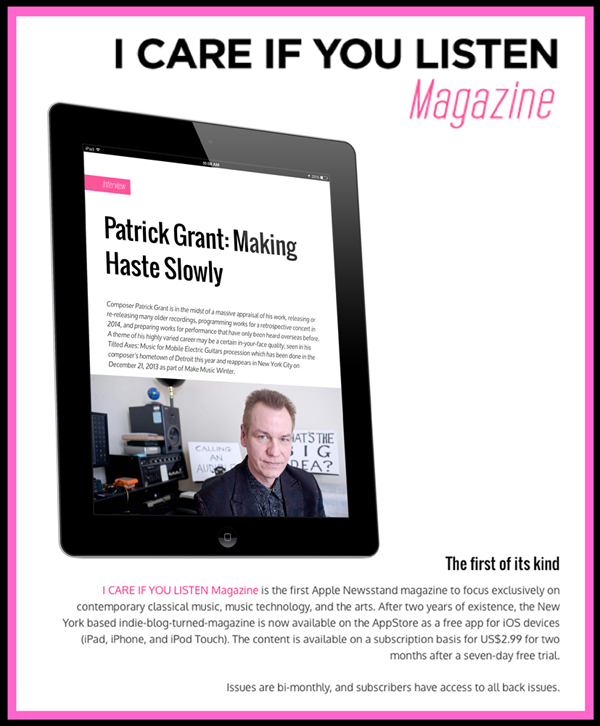
http://www.icareifyoulisten.com/magazine/
The first of its kind
I CARE IF YOU LISTEN Magazine is the first Apple Newsstand magazine to focus exclusively on contemporary classical music, music technology, and the arts. After two years of existence, the New York based indie-blog-turned-magazine is now available on the AppStore as a free app for iOS devices (iPad, iPhone, and iPod Touch). The content is available on a subscription basis for US$2.99 for two months after a seven-day free trial.
Issues are bi-monthly, and subscribers have access to all back issues.
28 NOV 13
Gratitude Adjustment: Wishing Everyone a Rocking Thanksgiving!
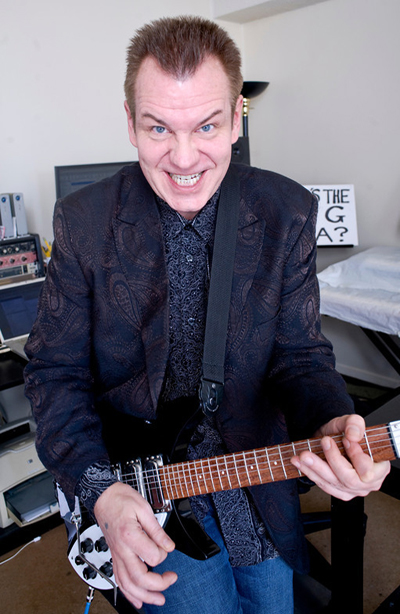
21 NOV 13
Pignose Amps Becomes an Official Sponosor of TILTED AXES NYC 2013
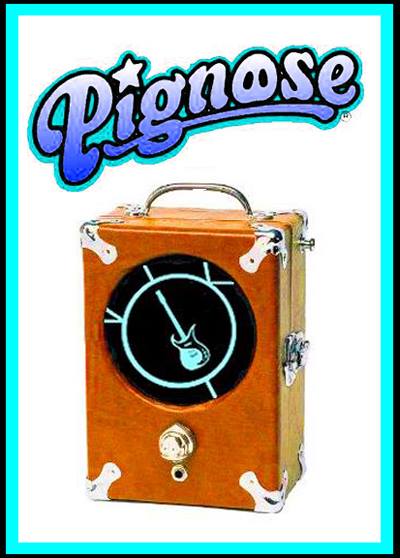
YES! - www.pignoseamps.com
Event iNFO at http://www.peppergreenmedia.com/2013TiltedNYC.html
17 NOV 13
CONCERT POSTPONED DUE TO DOUBLE-BOOKING AT VENUE
Stay tuned for the rescheduled date
On JAN 17, 2014
in New York City
25 Year Retrospective Concert
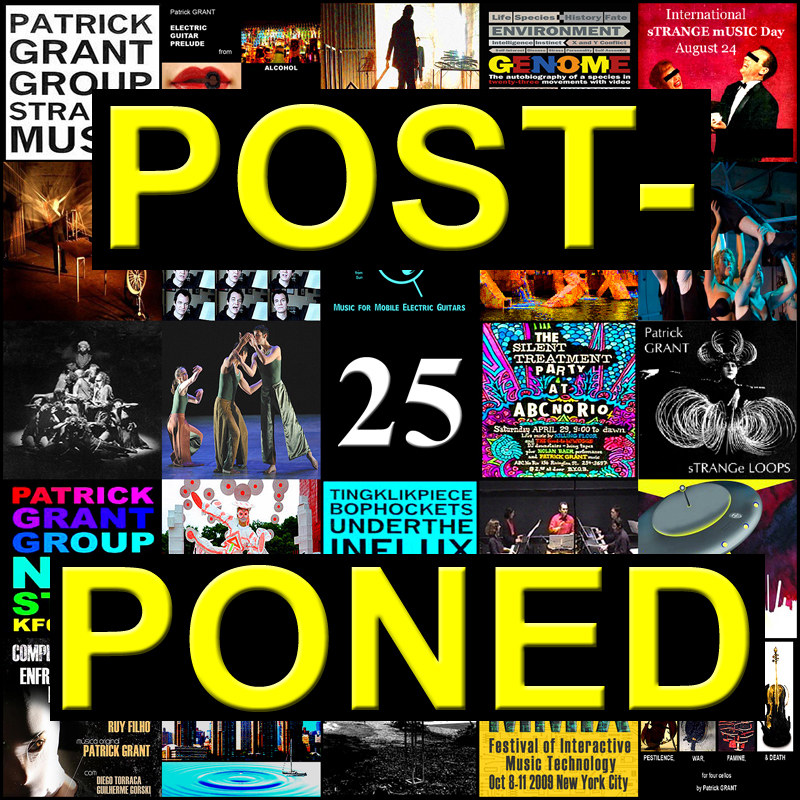
Music for concert, theater, dance, and the visual arts 1989 to 2014
Musicians & performers to include: Lynn Bechtold, Keith Bonner, Dan Cooper, Nick Didkovsky, Jed Distler, John Ferrari, Patrick Grant, Peter Jarvis, James Moore, Gene Pritsker, Daniel Reyes-Llinas, Melissa Perry, Eleonor Sandresky, Larry Simon, Lester St. Louis, Kathleen Supove, Michiyo Suzuki, Mioi Takeda, Thomas Walker, Zero Boy, with more to come. Thomas Carlo Bo - conductor
7:30 to 10:00pm @
SubCulture
45 Bleecker Street
east of Lafayette St.
New York, NY
www.subculturenewyork.com/
More iNFO TBA
12 NOV 13
Make Music Winter Line-ups Are Announced

"Composer and producer Patrick Grant creates and leads a procession with dozens of electric guitarists through the East Village, with a special stop at The Alamo, the iconic Astor Place sculpture commonly referred to as The Cube. In 2014, The Alamo will be moved from its current location to another part of the plaza. To honor this occurrence, Grant introduces new repertoire that evokes the iconic guitar music that has scored sub-genre Wild West cinema. The event will be a moving, polyphonic sound cloud layered in compelling, electric rhythms to honor the season’s axial tilt."
Check out the full list of Dec. 21st New York City musical parades and processions HERE
07 NOV 13
FRETATHON - Composers Play Composers on Dec. 8th
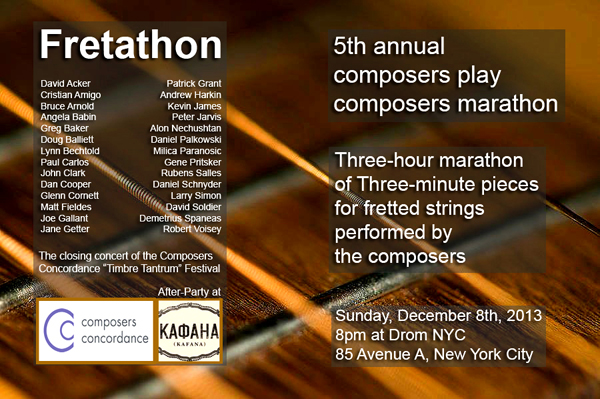
Composers Play Composers FRETATHON
3-hour marathon of 3-minute pieces for fretted
instruments performed by the composers
Sunday, December 8 at 8pm, Drom NYC
85 Avenue A, New York City
More iNFO at:
http://tinyurl.com/jwokpcw
07 NOV 13
December premiere: "DEPTH OF FIELD" for three percussionists
performed by Lukas Ligeti, Peter Jarvis, & Glen Velez
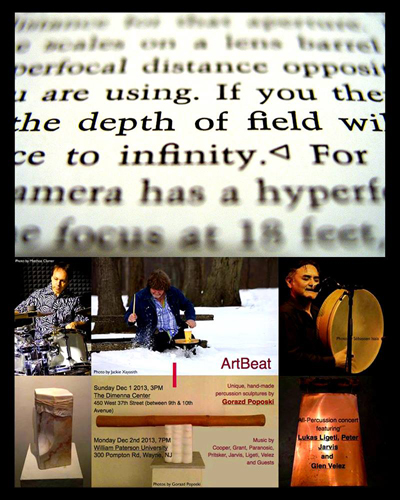
Sunday Dec 1 2013, 3PM
The Dimenna Center
450 West 37th Street (between 9th & 10th Avenue)
Monday Dec 2nd 2013, 7PM
William Paterson University
300 Pompton Rd, Wayne, NJ
3rd Annual Composers Concordance Festival: Timbre Tantrum
More iNFO at http://composersconcordance.wix.com/
01 NOV 13
ASCAP Plus+ Award for Concert Music

PG received an ASCAP Plus+ Award for another year in a row. The ASCAP Plus+ Awards program provides cash and recognition to writers.
http://www.ascap.com/members/ascaplus.aspx
21 OCT 13
Applications Are Open for TILTED AXES NYC 2013
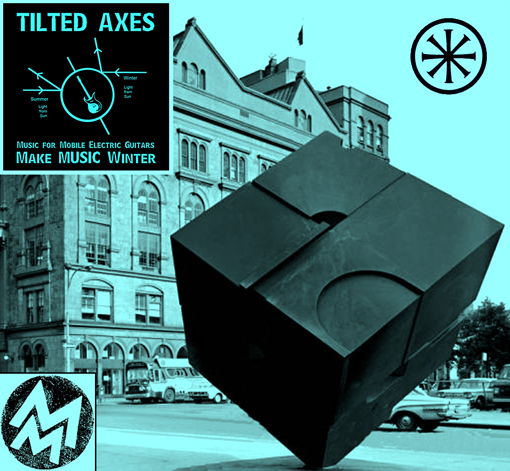
Applications for guitarist participants in Dec. 21's TILTED AXES NYC 2013 electric guitar procession are now being accepted at http://tinyurl.com/n6n4wok. Read the details there. You can request an email application or ask questions by writing to: tiltednyc2013@peppergreenmedia.com. Applying is necessary and is open until all slots are filled based on available mini-amplifiers.
17 OCT 13
Joseph Keckler Named "Best Downtown Performance Artist"
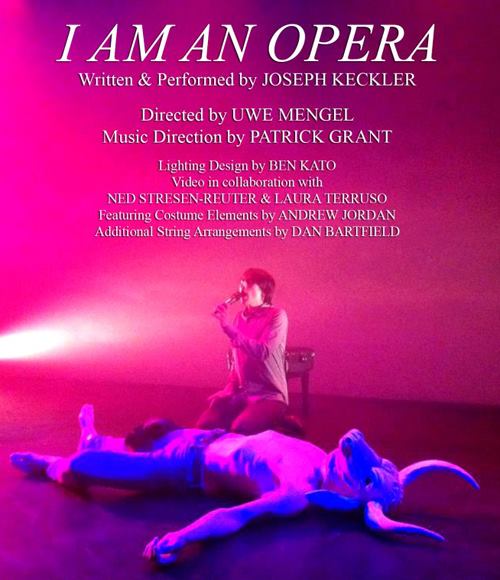
A HUGE congratulations to Joseph Keckler on being named Best Downtown Performance Artist by the Village Voice. What a pleasure it was for me to music produce and perform with him (from the soundboard) last spring during his four-week run of "I am an Opera" at Dixon Place.
WTG, Joseph!
Joseph Keckler: http://www.josephkeckler.com/
Village Voice: http://tinyurl.com/lukn5t4
Dixon Place: http://tinyurl.com/ln97242
09 OCT 13
Part 3 of our Tilted Trilogy in NYC: "The Alamo's Last Stand"
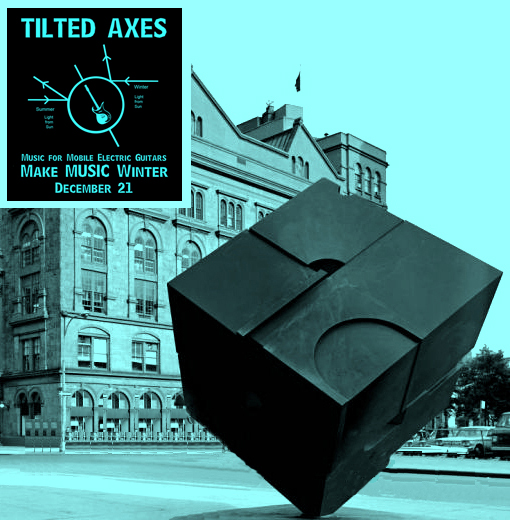
Produced by Peppergreen Media and made possible through the help and support of our sponsors and partners
Make Music New York, Spectrum NYC, Discover Guitar, Pignose Amps, D'Addario Strings, The Music Building, and Strings by Aurora

TILTED AXES: Music for Mobile Electric Guitars
Make Music Winter
December 21, 2013
New York City
3pm-5pm
More iNFO HERE: http://tinyurl.com/l4fj3ce
21 SEP 13
CONCERT POSTPONED DUE TO DOUBLE-BOOKING AT VENUE
Stay tuned for the rescheduled date
On JAN 17, 2014
in New York City
25 Year Retrospective Concert
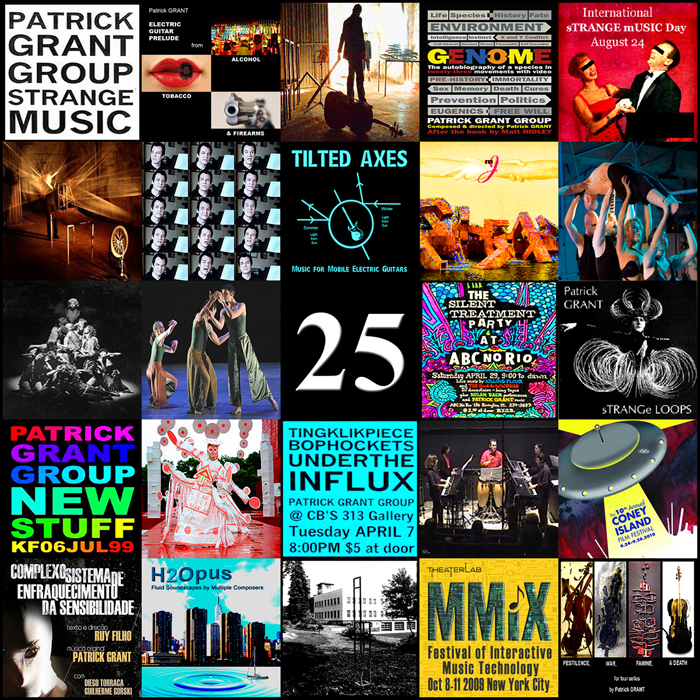
Music for concert, theater, dance, and the visual arts 1989 to 2014
Musicians & performers to include: Lynn Bechtold, Keith Bonner, Dan Cooper, Nick Didkovsky, Jed Distler, John Ferrari, Patrick Grant, Peter Jarvis, James Moore, Gene Pritsker, Daniel Reyes-Llinas, Melissa Perry, Eleonor Sandresky, Larry Simon, Lester St. Louis, Kathleen Supove, Michiyo Suzuki, Mioi Takeda, Thomas Walker, Zero Boy, with more to come. Thomas Carlo Bo - conductor
7:30 to 10:00pm @
SubCulture
45 Bleecker Street
east of Lafayette St.
New York, NY
www.subculturenewyork.com/
Doors open at 7pm
Produced by Peppergreen Media with Composers Concordance
More iNFO TBA HERE
25 AUG 13
RECAP & THANKS - (Int'l) STRANGE MUSIC DAY 2013

Great stuff, People of Earth. You know, despite my personal FB postings, most of these yearly events exist because folks find it a worthy, albeit whimsical cause, and run with it. Whimsical? Maybe. I do think that anything we can do to get ourselves to pause and reflect is substantial. As a musician, that was my entry point: listen to something unusual, with attention, that just might not only broaden your ears, but also your outlook in general. Everything being relative, it is always interesting how this is interpreted in different cities, different countries, different cultures. We're always surprised.
For me personally, this year's standouts were the radio shows that dedicated programs to the day: Justin H. Brierley's Music for Internets in Rhode Island, Joel Krutt's Pushing the Envelope in Connecticutt, and Radio Mongaguá in São Paulo, Brazil, among many others. Live performances took place. In NYC, Glenn Cornett's Spectrum NYC had an afternoon of exceptional strange-makers playing music for the event.
There was even a number of original songs composed for the day thanks to the 50/90 Challenge.
The strangest surprise was when McDonald's restaurants seized upon the opportunity in sending out a Strange Music Day tweet to promote their product. That gave me mixed feelings but, after a posting of Devo's Too Much Paranoias, I rationalized to an astute friend, "I'll make an exception for the 1.5 million Twitter followers who were encouraged to stretch their ears (not just their stomachs) for today."
Still, and always, the biggest pleasure was knowing, from afar, that there is the growing number of summer schools that took the opportunity to make music with children, to create instruments, to pause and reflect upon what it means to listen without prejudice and see where that takes one (New Delhi, India, Japan, Germany, and Ireland especially). It is satisfying to know that in the end, a future of good music will be assured for the rest of us as the talents of these children develop.
That said, and this is me now, I give a big shout out to David Soldier with Komar and Melamid's piece The Most Unwanted Song that I heard today on Joel Krutt's radio show. It is a piece that, through empirical scientific investigation, was created to afflict us in every worst way possible. The result is one of the funniest pieces, intelligently so, that I've ever heard.
So, it's a two way street: you have all turned me onto so many new sounds and to new ways of thinking about what music can be, that I can never thank you enough. I know many people the world over (and the emails are still pouring in like crazy) feel the same.
Until next year. Thank you!
-Patrick Grant
24 AUG 13
International Strange Music Day, August 24, 2013
this year dedicated to children (young and old)
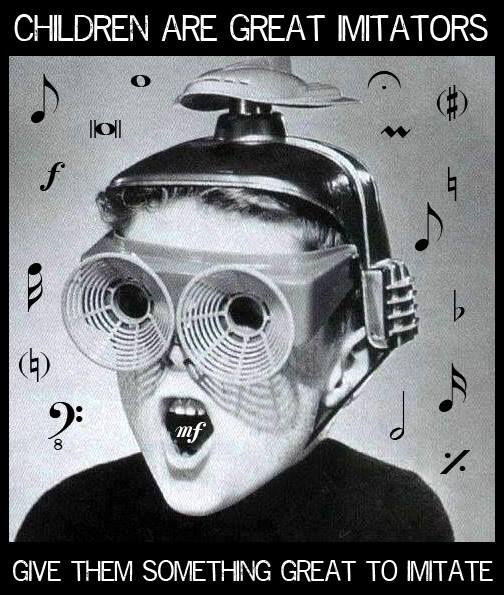
Greetings People of Earth,
It's been 15 years since I first flew the Strange Music banner during our inaugural concert at the Knitting Factory in New York City. Since then, 'Strange Music' has become many things: a record label, concert series, a social irritant, but most famously, a day to stretch one's ears by either listening to or playing music that is new to you. It's all relative.
Since this holiday observance came into existence during an otherwise holiday-less month, it's actually been picked up by a number of small organizations around the world: a blog here and there, a growing throng of adventurous radio stations, but mostly by a number of summer school programs searching for a creative way to occupy idle hands and ears. An internet search will turn up pages and pages of such schools.
I urge you to spend a moment with your young ones and blow their little minds with something exceptionally challenging to listen to, especially if you do not normally do so. If there are some instruments around, make up a song for the day. If not, make an instrument from stuff you have in the house.
A small gesture such as this would provide memories lasting a lifetime. The evidence of the benefits of engaging children in music has filled volumes. No reason to keep it simple: the stranger the better. Young ears have no prejudice.
You say that you DON'T have any kids around?
Then do it for yourself.
It will keep YOU young.
Really.
-Patrick Grant
http://www.strangemusic.com/ISMD2013.html
===end of transmission===
17 AUG 13
International sTRANGE mUSIC Day August 24th
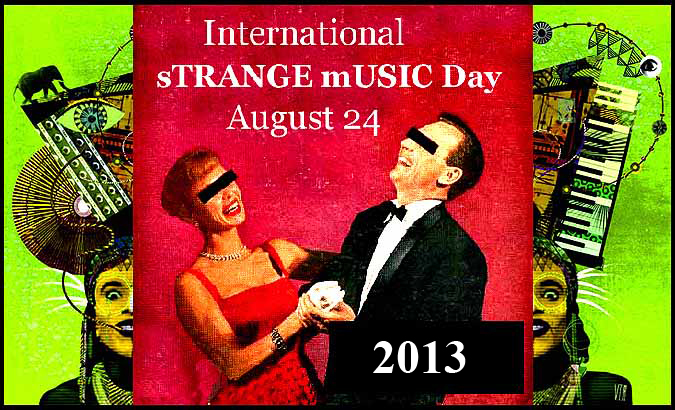
02 AUG 13
The Orchestra of Crafty Guitarists
directed by Robert Fripp
Argentina - Sept. 30 thru Oct.07, 2013
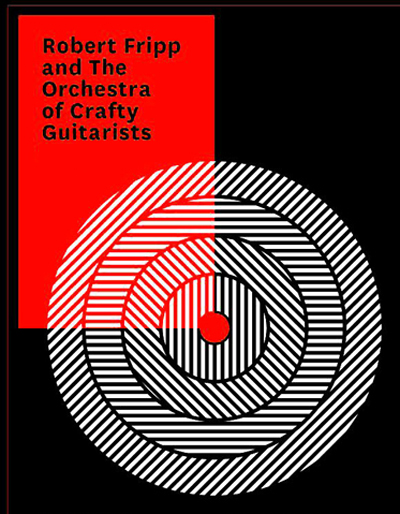
More iNFO HERE
30 JUL 13
This week's CD re-issue: #4 "Music for the Knee Space"
now available on iTunes and 30 other digital download sites
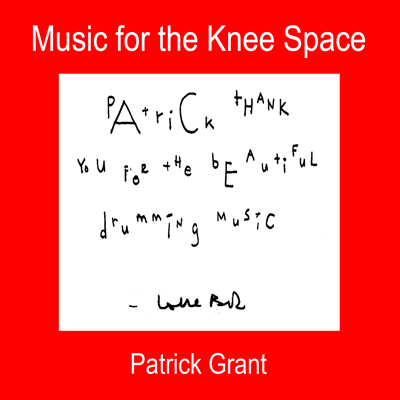
https://itunes.apple.com/us/album/music-for-the-knee-space/id680922047
"The Ladder of Red" (2002)
Created for Robert Wilson's Watermill Benefit 2002, "The Red Night." Conceived, designed, & directed by Andrey Bartenev, original music by Patrick Grant (music a.k.a. "Influx"), text by Christopher Knowles, stage managed by Sue Jane Stoker, produced by Robert Wilson, performed by the Watermill Artists of 2002. Video of this performance is available on YouTube.
Recorded music performed by: Patrick Grant (keyboard), Jed Distler (piano), Paul Desilva (organ), Keith Bonner (flute), Thomas P. Oberle (clarinet), Darryl Gregory (trombone), David Simons (percussion), Michael Evans (drums), Alejandra Mahave (viola), Grace Lin (cello), & Mark Steven Brooks (electric bass) at the Knitting Factory NYC, 1998.
"Clave Molino" (2003)
The theme of this year's Watermill Center Summer Benefit was "Molino Cubano" meaning Cuban Mill. For a second year Robert Wilson asked me to create some original music for the benefit to be used in juxtaposition with a creation of one of the Center's artists-in-residence, under his direction. This year he wanted percussion-instruments-only for an installation in the Knee Space, itself a missing central building that will eventually connect the two wings of the Center, through which all the guests would enter the benefit. The visual part of the installation was created by the Cuban artist Tania Bruguera and was called "Dated Flesh". It consisted of live nudes covered in dripping milk standing on shelves built high into the walls of the space. I created a piece of music (played by the excellent John Ferrari) that I called "cLAVE mOLINO", a half hour multi-tracked meditation on abstracted Cuban clave rhythms that were subjected to the textural processes of my musical architecture. The piece looped for five times in the installation and had the best sound possible thanks to the two refrigerator-sized sub-woofers in the basement. Two widely spaced hi/mid speakers in the installation itself beautifully brought out the piece's polyphonic dynamics and spatial elements. The installation was proclaimed a "standout piece" of the evening by John Rockwell in the New York Times.
The creation and recording of "cLAVE mOLINO" was made possible through the generous support of Robert Wilson and the Byrd Hoffman Water Mill Foundation. Thanks to everyone involved.
All music (c) and published by Peppergreen Media (ASCAP)
29 JUL 13
5 years to the day - Miss you, Mom. Always will. xox

Patricia McKenna 1937-2008
Patricia E. McKenna, beloved mother, political activist and supporter of the arts, aged 70, formerly of Huntington Woods, Detroit, Birmingham and Troy, Michigan, passed away in the arms of her children on July 29, 2008 in Tucson, AZ.
The daughter of Irish immigrant Patrick McKenna and Michigan native Helen Keene, she attended the Kingswood Cranbrook School and graduated in 1959 from Denison University in Ohio with a BA in Theatre and English. Her marriage in 1961 to Detroit police officer Gordon “Buck” Grant produced three children: Patrick Grant (1963), Daniel (1969) [Stacey] Grant, and Gael (1971). Patricia and Gordon divorced in 1974.
Patricia’s many talents and interests were reflected in her multi-faceted career. Amongst the positions and activities she held were: model for the International Car Shows held in Detroit, investigative journalist for the Detroit News, director/actress of amateur theater for the Ridgedale Players in Pleasant Ridge, private investigator for a retired FBI agent (she obtained a degree in Law Enforcement and Protection from Mercy College in 1978), talent booking agent (clients included incipient comedian Tim Allen), and assisting the administration of McKenna Industries Inc., an automotive model making firm established by her late father.
She was accepted as a member in the American Academy of Certified Geniuses in 1987.
In the last two decades of her life she lived in the American southwest (NM and AZ) where she wrote poetry and plays, articles for the local newspapers, fought corruption in her local government, helped youths with substance abuse problems and sponsored local immigrant families.
She will be lovingly remembered by her children and grandchildren Courtney, Meghan and Grant Thomas, her brother Michael McKenna of West Bloomfield, her nephews Mick (and family), Brian, and niece, Stephanie.
24 JUL 13
MELODY for MELODY for Accordion & DJ
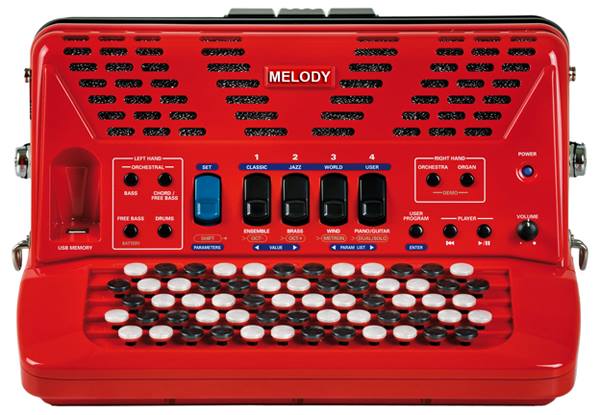
Friday night, July 26th, in NYC: "Melody for Melody for Accordion and DJ" performed by William Schimmel and Milica Paranosic at 7pm at the Tenri Cultural Institute, 43A West 13th St., $25 at the door.
This piece is part of the Compcord Suite containing works by Schimmel, Paranosic, Dan Cooper, Jed Distler, Joseph Pehrson, and Gene Pritsker.
Also on the program will be works by Art Bailey, David Soldier, Noah Creshevsky, John Foti, Robert Young McMahan, Dmitri Shostakovich, & Leon Sash.
More iNFO at http://www.billschimmel.com/
THE TENRI CULTURAL INSTITITE
43A West 13th Street, New York City
18 JUL 13
This week's CD re-issue: #3 "Sacred Sister Dedication Music"
now available on iTunes and 30 other digital download sites
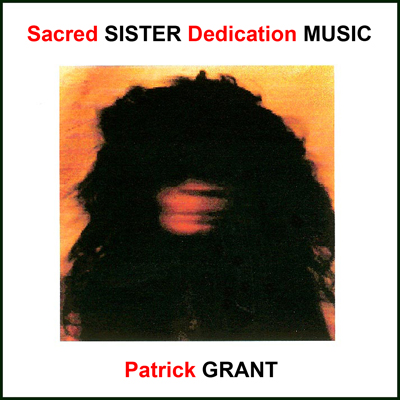
https://itunes.apple.com/us/album/sacred-sister-dedication-music/id675890575
Sacred SISTER Dedication MUSIC
A collaborative project of Bettina WITTEVEEN and Robert WILSON with music by Patrick GRANT
Dedication Music was created for an event that marked the launch of a collaboration between the German photographer Bettina WitteVeen and Robert Wilson, one of the major figures of the avant-garde. The music that served to dedicate the project is comprised of 3 cycles of ambient gamelan alternating with 4 dance-like movements. Of the dance movements, two are loosely based on tingklik and kebyar styles while the other two are abstract structures of my own design. PG - NYC
dedicate v. 1. To set apart for a deity or for religious purposes; consecrate. 2. To set apart for some special use; to appropriate; devote. 3. To address or inscribe (a literary work or artistic performance, for example) to someone as a mark of respect or affection.
11 JUL 13
This week's CD re-issue: #2 "GENOME: The Autobiography of a Species"
now available on iTunes and 30 other digital download sites
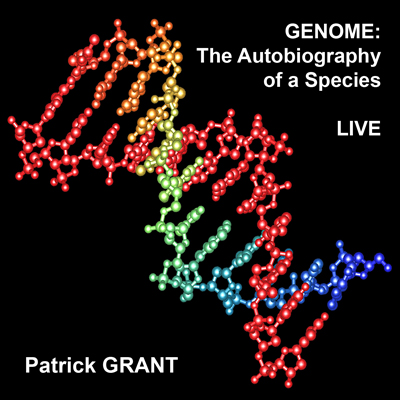
https://itunes.apple.com/us/album/genome-autobiography-species/id672898925
In commemoration of the 50th anniversary of the discovery of DNA and the double helix, Peppergreen Media presents a live recording of GENOME: The Autobiography of a Species in 23 Movements. Composed and directed by Patrick Grant, it is based on the book by award winning science author Matt Ridley. This recording is taken from two performances on February 27 and 28 (the latter date being the actual anniversary of the discovery) at the ANNINA NOSEI GALLERY in New York City.
The structure of the piece is in 23 parts in that each section represents a chromosome in the human genome. This musical work takes the title of each of its parts after Ridley's naming of chapters in his book where he emphasizes a particular characteristic of each one in order to create a narrative. They are: Life, Species, History, Fate, Environment, Intelligence, Instinct, X and Y Conflict, Self-Interest, Disease, Stress, Personality, Self-Assembly, Pre-History, Immortality, Sex, Memory, Death, Cures, Prevention, Politics, Eugenics, and Free Will. The music is performed by Grant's own ensemble the Patrick Grant Group where he will be joined by Kathleen Supové and Jed Distler on keyboards and John Ferrari on percussion and with vocal samples courtesy of composer Lisa Bielawa.
PROGRAM NOTES
We were returning from the Millennial Gathering of Clan Grant in Inverness, Scotland in 2000 when, while in transit at Heathrow Airport, my girlfriend at the time returned with a bag of magazines and books for the final leg of our trip. In it she had gotten "GENOME: The Autobiography of a Species" by Matt Ridley because she knows of my love of science books for the layperson and how I have liked to incorporate many of the ideas I find there into my music in a search for new musical forms and generative forces found in nature. I just loved how the chapters were laid out in a way in which each title touched upon one of the Big Ideas we're confronted with everyday. For a composer, many of the found programmatic forms have already been taken, be they The Seasons, The Planets, The Seven Deadly Sins etc., so this book seemed to be just begging to be worked into some kind of a piece.
I have always been interested in musical forms that are self-generated. These have been the polyphonic music of the 17th and 18th centuries, gamelan music of Indonesia, the process pieces of the early minimalists and the like. By self-generated I mean that one could take a measure or two from any of the above genres and extrapolate an entire piece from it based on a few guiding principles, much like how the digital code for our entire being is contained within our DNA.
I had tried contacting Matt Ridley's publisher to no avail for a year and a half until, fortuitously, he appeared on WNYC as a guest and I was able to get a call in and he spoke to me directly (off air), giving me the green light to go ahead and do the project. I am forever indebted to Public Radio!
I give my biggest thanks to him and to Harper-Collins Publishers for their permission and support, Annina Nosei for making this concert even possible (thank you, Annina!), Lee Ortega and Ken Smith at the gallery for all the details too numerous to mention, John Schaefer and WNYC for helping us get the word out, SEED Magazine for the same, CUNY for academic credibility, my great colleagues that comprise my ensemble, composer Lisa Bielawa for her vocal samples of the solfegge forms of C-A-T-G, the four chemical bases which make up our DNA (cytosine, adenine, thymine, and guanine), and of course Drs. Watson & Crick for their discovery.
PG - February 2003 - NYC
GENOME: The Autobiography of a Species
performed by Patrick Grant Group
Patrick Grant - keyboard
Kathleen Supove - keyboard
Jed Distler - keyboard
John Ferrari - percussion
07 JUL 13
"Victory Over the Sun" (1913) - The World's First Futurist Opera
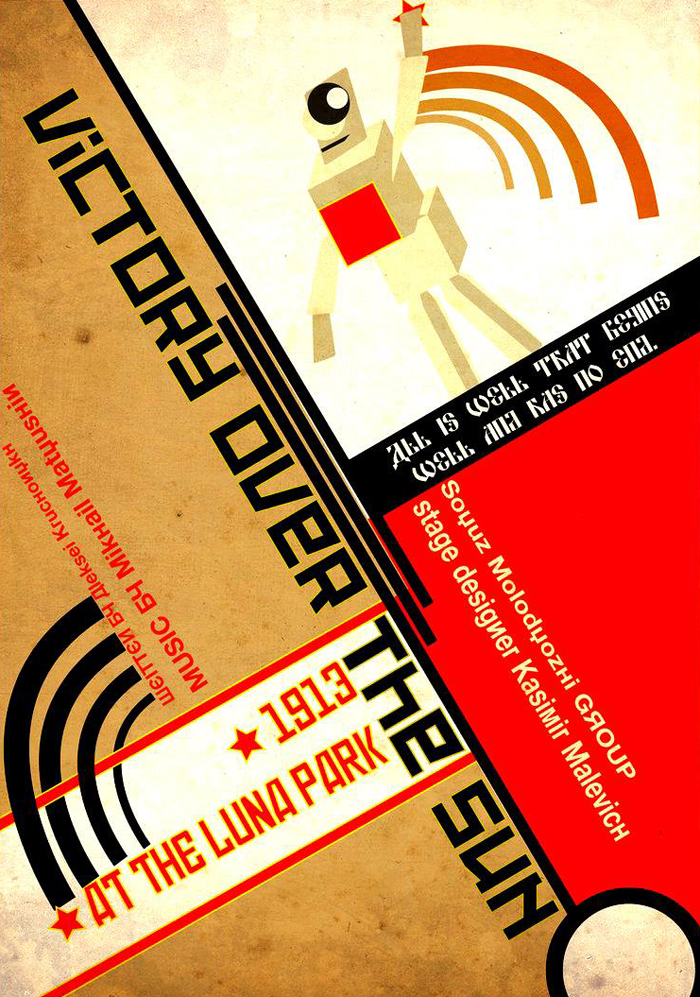
A lot has been said of "The Rite of Spring" in this, its centenary year, and rightfully so. However, there's still much to be said for "Victory Over the Sun," the world's first futurist opera which also premiered in 1913. Close to all of the music by Mikhail Matyushin has been lost yet the it remains in our cultural memory due to the stage designs of Kazimir Malevich and the text by Aleksei Kruchenykh. The opera was intended to underline parallels between literary text, musical score, and the art of painting, and featured a cast of such extravagant characters as Nero and Caligula in the Same Person, Traveller through All the Ages, Telephone Talker, The New Ones, etc.
This work was brought to my attention in 2002 by Robert Wilson when I had the great pleasure of working with the extraordinary Andrey Bartenev and other artists at the annual Watermill Center Benefit. I wouldn'y say that it influenced our work, "The Ladder of Red" (2002), but Bob certainly set us in a correct place as far as lineage goes.
THE LADDER OF RED @ Robert Wilson's Watermill Center
I hope that, before this year is out, that "Victory Over the Sun" also gets the recognition that it deserves as a significant precursor of 20th century performance art and beyond.
06 JUL 13
Saturday, July 13th is Guitar Circle Day

Saturday, July 13th is Guitar Circle Day. A one-day course of "An Introduction to The GC Tuning" will be given in Bordeaux, France http://tinyurl.com/qg4wwzg and a one-day course on the "Principles of Guitar Circle Work" will be given in New York City, NY http://tinyurl.com/pz9saj3.
Click on the links above for more information and for how one can participate.
04 JUL 13
This week's CD re-issue: #1 "Fields Amaze"
now available on iTunes and 30 other digital download sites
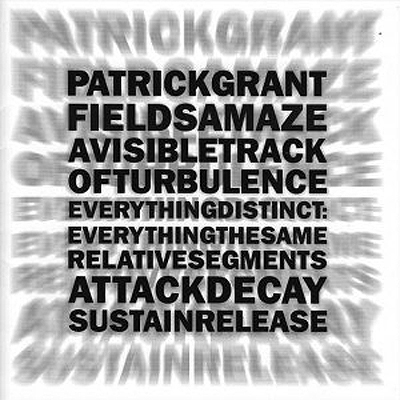
https://itunes.apple.com/us/album/fields-amaze/id391579103
1. FIELDS AMAZE (8:35)
Keyboards, gamelan and percussion: Patrick Grant
Additional gamelan: Barbara Benary, Percussion: David Simons
2. A VISIBLE TRACK OF TURBULENCE (9:23)
Flute: Keith Bonner, Clarinet: Thomas P. Oberle, Piano: Patrick Grant
3. EVERYTHING DISTINCT: EVERYTHING THE SAME (12:18)
Keyboards and percussion: Patrick Grant Percussion solo: David Simons
RELATIVE SEGMENTS
4. ATTACK (3:40)
5. DECAY (4:33)
6. SUSTAIN (3:08)
7. RELEASE (2:35)
Flute: Keith Bonner Clarinet: Thomas P. Oberle, Viola: Jovannina Pagano, Cello: Jane Scarpantoni, Piano and keyboards: Patrick Grant
8. IMAGINARY HORROR FILM - Part 1
9. IMAGINARY HORROR FILM - Part 2
Patrick Grant, Marija Ilic - keyboards, John Ferrari - drums & percussion, Keith Bonner - flute, Thomas P. Oberle - clarinet, Darryl Gregory - trombone, Martha Mooke - viola, Maxine Neumann - cello, David Simons - theremin & percussion, Dominic Frasca - electric guitar, Mark Steven Brooks - electric bass, and Alexandra Montano - voice
Tracks 1-7 recorded, edited and mixed at Looking Glass Studios NYC
Recording Engineer: Garry Rindfuss, Assistant Engineer and
Editing Engineer: Dante DeSole, Assistant Editing Engineer: Ryoji Hata, Administration: Amanda Riesman, Gamelan instruments provided by Barbara Benary and Gamelan Son of Lion, Large kendang drum and additional gongs provided by Skip LaPlante and Music for Homemade Instruments
Tracks 8-9 recorded 2000 at sTUDIO 41 in NYC. Mixed and mastered by Patrick Grant.
Album cover design: Lost In Brooklyn Studio
Produced by Patrick Grant
® & © 1998 & 2000 sTRANGEmUSIC/Peppergreen Media (ASCAP)
==============================================
ALBUM NOTES
==============================================
FIELDS AMAZE (1997)
This piece shows my interest and study of the Balinese gamelan, the indigenous percussion ensemble of Indonesia. For those who may not know, the gamelan (which literally translates as "ensemble" or perhaps in a more Westernized sense, "orchestra") is comprised of metallophones in various octaves with gongs and drums delineating the overall structural points of a piece. Gamelans of Indonesia use two different tunings. The first is known as Slendro, a five-tone scale that very, very roughly translates into our familiar pentatonic scale (the black keys on the piano). Like Western music, various modes (I think of them as fiavors) can be made with this scale depending on which of the five tones is chosen as tonal center. The second tuning is called Pelog, a seven-tone scale that purports to divide the octave into seven approximately equal steps, but this is never the case. There is always some adjustment made by the instrument builders depending on their taste. Fields Amaze uses this second tuning, the Western approximation of which would be D-E-F-G#-A-Bb-C. In Indonesia, all tunings deviate from village to village depending on the gong-maker and the general aesthetic of the region. In fact, there is no A440 reference, so all tunings can start on any pitch and be relatively constructed from there. Villages will get into heated quarrels over whose tuning is better. Wow.
I have been able to go to Bali twice, in 1994 and '95, and was fortunate enough to have studied with I Wayan Lantir, the son of Grindem, one of the teachers of Colin McPhee, the composer who studied in Bali in the 1930s and brought the Balinese gamelan to the attention of the Western world. During this time, I had also become connected here in New York with Barbara Benary's Gamelan Son of Lion, the East Coast's first gamelan ensemble, which gave me many opportunities to try out ideas with a group that focuses on contemporary repertoire.
Fields Amaze, which I wrote for this group, is a hybrid of a number of cultural musics. First there's the gamelan, and second, there's the piano, which functions as a solo instrument in a Western sense, often to Bachian effect over a pedal point. Then there's the cross-rhythmic aspects which are informed by the music of Latin America and West Africa. My sincere hope is that, despite this hodgepodge of infiuences, Fields Amaze is a piece whose sum is greater than its parts. It was premiered by Gamelan Son of Lion with myself as soloist at the Celebrate Brooklyn! Festival in Prospect Park, in the summer of 1997.
A VISIBLE TRACK OF TURBULENCE (1996)
I have often been drawn into music by extra-musical forces. I had been deeply interested in finding forms and structures in nature and then manipulating them for narrative purposes. Many algorithmic computer programs for musical structures had become available via the Internet that generated patterns of music determined by a user's manipulation of variables. I had up until then done this the hard way: by throwing dice, using a calculator or by mapping tones onto visual media. This was because, firstly, I didn't yet own a computer and, secondly, I had convinced myself that it built character to understand a process at a "hands-on" base level before turning it over to a machine.
I used freeware programs based on recursive equations found in chaos theory. The programs themselves weren't much and didn't even save to MIDI. I had to capture the results on an out-of-sync, drifting sequencer, then shuttle that back into a notation program and do LOTS of clean-up. This turned out to be pretty tedious, but was producing interesting enough results to be worth it. The resultant musical "stock" I likened to lumber in a lumber yard: it was now up to me to merely play the carpenter and decide what I wanted to build with this great variety of different materials.
Around this time, I was asked by the downtown New York performance collective Music Under Construction to be a part of their annual composer and choreographer collaborations. It was from this eventual collaboration, with choreographer and dancer Mane Anthony, that the musical material I had been working on had reason to take final form. Ms. Anthony expressed her desire to create a piece that was to be a kind of a wake in the funereal sense. I myself was hoping to create something a bit livelier, so we had to work out a solution.
I love dictionaries since a word or phrase can be a source of inspiration and the dictionary didn't let me down this time. I looked up the word "wake" and found one definition to be "a visible track of turbulence" trailing a boat moving forward in water. That was it. The metaphor of turbulence, which plays a role in chaos theory, was my creative point of entry into the piece.
Features of the music itself are the use of parallel motion, subtractive rhythmic processes based on rhumba rhythms, and metric modulations from section to section (each small section goes into triplets which in turn become the straight duples of the following section). When the tempo gets to the first climax, the tempo is halved, marked by a silent moment which in rehearsal we referred to as the "eye of the hurricane." The music resumes only to build up again into an even more frenetic second climax and ending. The piece was premiered at The Construction Company, New York, in December 1996.
EVERYTHING DISTINCT: EVERYTHING THE SAME (1995)
A fine example of my composition technique pre-computer, when I manually handled the operations that created the many layers of this piece. It was my hope that by layering as many musical processes as possible, one layer would hide another from the listener. The organic quality thus created would give the listener a feeling that there was indeed a pattern behind the music, one that would reveal itself over time. This piece was originally written for game· Ian but soon revealed itself to be far better suited for three just-tuned keyboards along with the gongs, percussion and pulse of the original.
Everything Distinct: Everything the Same is structurally based on a visual model from chaos theory, the Koch Snowflake, which musically can best be represented as ABA forms within ABA forms. I found that 16 bars of material put into fractaline form could generate 81 bars of structure, a framework for each of the work's three large sections. Each section uses a different mode to highlight a different aspect of the piece's just intonation tuning. The first section uses all seven tones of the scale, the second one uses four, the third uses five (technically, the third section should have gone back to the seven-tone mode of the first to maintain ABA form, but these inexplicable breakings of the process keep things livelier and less symmetrical).
I go through as many textural possibilities as possible in the three large sections-Big A, Big B and Big C (the "everything distinct" part of the piece)-making a "swiss cheese" of the music by sculpting away unneeded material. So, an ''A" measure, the most repetitive of its type in this structure, will sound different (yet familiar) every time it cycles past due to the number of parts playing (or not playing). (The "everything the same" part of the piece is represented by the 3 x 16 bars of root material Little A, Little B and Little C - from which the piece is generated.)
Rhythmically, both "B" sections are written in half the time of the ''A"' and "C" sections. This helps create the illusion of many different tempi even only two are used throughout the entire piece (with the exception of the dramatic accelerando and molto ritard at the very end). Similar processes of dynamics are also independently layered on top, further blurring the distinctions of each individual process into a whole.
The piece was first performed in the original gamelan version at the Greenwich House Music School NYC in May 1995 and in this definitive keyboard version at Context Studios, New York, in January 1997.
RELATIVE SEGMENTS (1997)
is actually a short symphony of sorts. The titles of each section - Attack, Decay, Sustain, Release-refer to the four controls found on a synthesizer's envelope generators, which determine the relative shapes of an envelope's segments. The work is held togeth· er by a number of unifying compositional areas that I was exploring at the time. First, it is an etude on the intervals of the major and minor thirds. Second, it's a study in modality, with ever-changing key signatures effecting musical phrases that retain their rhythms and places on the staves. Third, it's a study in fractal musical forms and how dividing phrases into different lengths by placing and displacing metrical accents can entirely change their meaning.
The keyboard instrumentation of piano and two electric pianos (one professional quality and one classroom quality) has been questioned by some of my colleagues, but for me it's a sincere choice. There's something about this piece that I find "basic" in a positive sense and that lends itself to these timbres. Plus, what can beat that madder-than-hell-bumblebee timbre of a cheap Wurlitzer's lower range?
All the segments go through a cycle I call the "zigzag of fifths" (as opposed to the more familiar "circle"), which forms the basis of the harmonic movement. Starting out in the key of C, the key signatures move up one sharp, then one flat, then two sharps, two flats, etc. Unlike the circle of fifths, it doesn't end up where it had started, instead ending either a semi-tone higher or lower depending on which way it's built.
"Attack" takes the seven note sequence 1357246 through a number of rhythmic permutations by placing accents at different points in the pattern. Accentuating every sixth, fourth, third and second note yield a variety of patterns and form, along with zigzagging modality, the essence of this movement. I find this technique, a staple of gamelan technique, almost inexhaustible as a source of inspiration and have written many pieces using it, as have many other composers, notably Joseph Schillinger and Daniel Goode.
"Decay" is simply a study in rhythmic entropy.
Initially constructed along a similar ABA fractaline structure as Everything Distinct, the structure gets compressed in the second half, distorting, warping and ultimately hastening its sickly conclusion despite the upward pull of the clave-inspired rhythmic rondo. I find the title of this segment particularly apt as I have always found its harmonies too sweet in a decadent kind of way.
"Sustain" is a study in whole note clusters moving through variations in orchestration. It is more about pure color than the other movements.
"Release" is, like the first movement, a study in accents but here, asymmetrically placed ones. The steady motivic pulse of a fast 3/4 meter holds together inversions and retrogrades in a multitude of key signatures. Offbeat accents, all intoned on the note F, threaten the rhythmically stability and harmonic movement with their consistent nagging. The spell is broken at the end, when a coda made up of a compressed form of every accent heard thus far breaks this gravitational pull and flies upward and out of sight.
Relative Segments was first performed at Context Studios, New York, in January 1997.
IMAGINARY HORROR FILM (1998/2000)
This thirteen section piece is in many ways my own paean to all of the truly awful horror films I watched (and thoroughly enjoyed) when I was a kid. At the same it is also a deconstruction of serialist compositional technique (which can said to be a horror in itself). However, all such sections have been written to create a bizarre sense of tonality (and that's a big Luigi "No-No" by twelve-tone standards). In this sense I am indeed a serial killer but, to my ears, I much prefer this twisted take on tonality and all of the genre-hopping it makes possible: harmonically and stylistically. For those of you who keep track of such things, the tuning is not the equal temperament of most 20th century composers but in Werckmeister III, the well-tempered tuning that Bach used. This way, each chord has its own flavor, however subtle, that sets it apart from all others and only adds to the slighty disturbed quality of this piece.
I don't want to spoil it for anyone who might want to create their own mental scenario but, here are the names of the sections as I imagined a possible narrative:
Part One - The Set-Up
Main Title & The Accident
Hospital
Nine Months Later
Daily Living (Gnossienne No. 3.5)
Baiting the Trap
Going for a Drive
Part Two - The Pay-Off
Cemetery
Hitchhiker No. 3
Unsuspecting Victim
Under the Knife
Evening Prayer
New Day to FACE
End Title
==============================================
Album notes by Patrick Grant, Autumn 2001, NYC
25 JUN 13
RECORDING, MIXING, & MASTERING

Testing 1-2-3
More iNFO TBA
21 JUN 13
Broken Record! The World's Largest Electronic Keyboard Ensemble!
Co-produced by Peppergreen Media
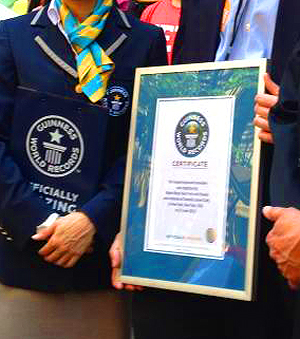
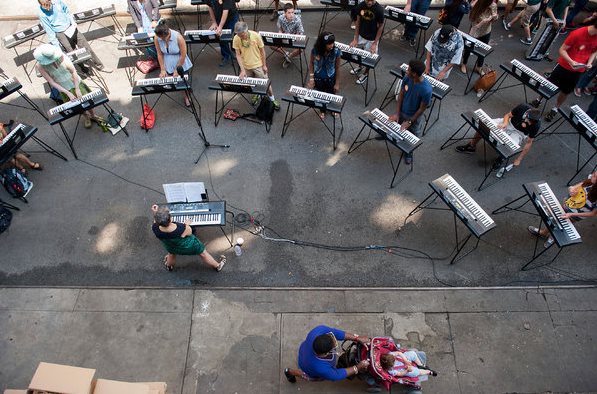
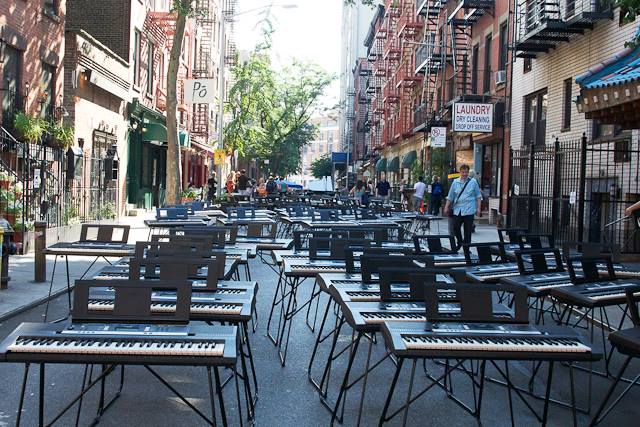
175 Keyboards on Cornelia Street in NYC to break the record according to Guinness.
More pictures HERE: http://tinyurl.com/k3cae4y
18 JUN 13
Featured Event - June 21
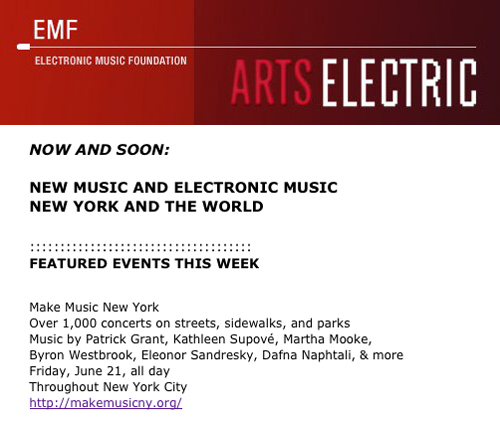
More iNFO HERE: http://tinyurl.com/kcvdd8v
16 JUN 13
"Dad's Detroit - a video memoir" for Father's Day, 16 min. Dad's Detroit from Patrick Grant on Vimeo.
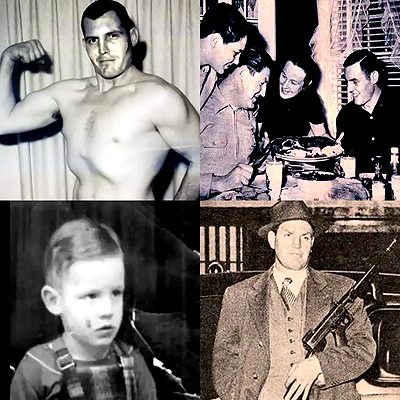
Direct link for viewing: http://vimeo.com/68445490
13 JUN 13
"Four Ambient Cellos #2" (2013) 18'02"

Listen here: http://tinyurl.com/laty55p
04 JUN 13
Happy Birthday, Judith Malina!
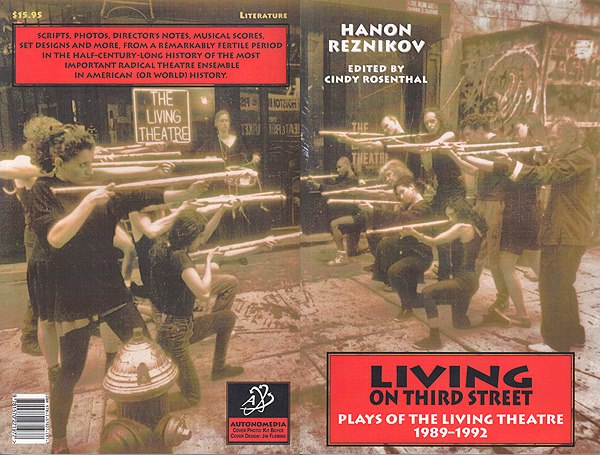
"Patrick Grant composed a brilliantly energetic score for the play. Driven by live piano (played at full tilt by Patrick himself like a carnivalesque master-of-musical-ceremonies) and synthesized riffs, the music for 'The Rules of Civility' was more deeply embedded in the staging and in the company's consciousness than any written score with which I can remember our working."
This comes from the late Hanon Reznikov's "LIVING on Third Street," recounting the plays of the Living Theatre from 1989-1992. The "Rules of Civility" (based on a found text attributed to George Washington) was our mini-opera that protested the first Gulf War. All told, the piece had over 150 performances between 1991-1993 in the U.S. and in Europe. While performing the piece in Europe, the NY cast was musically lead my my dear friend Michael Shenker, another soul lost too soon. Reznikov writes:
"Michael Shenker, a talented musician and community activist, ran the show in New York, using a synthesizer set in clavichord mode which created a special, period kind of elegance unlike Patrick Grant's music-hall acoustic piano, although Patrick's razor-sharp, driving sense of rhythm infused the actors onstage with an obsessional dynamism that set the play aglow on tour and somehow, was bombastic in a way well suited to the 'we'll tell you have to behave' attitude inherent in the text and gave it epic stature."
Published by Autonomedia (c) 2008
01 JUN 13
PG Partners with ComposersCollaborative to Break World Record on June 21
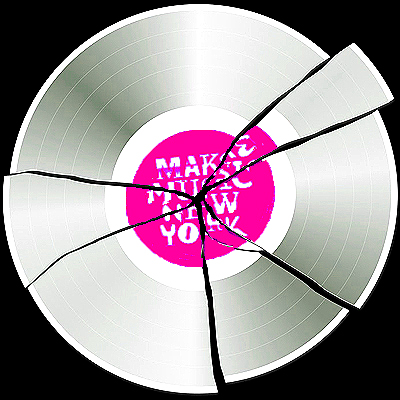
Cornelia Street, Greenwich Village (near W. 4th St and Sixth Ave)
11:00am – 2:00pm
Make Music New York presents the world premiere of Jed Distler's Broken Record, a piece composed for 175 battery-powered Yamaha keyboards and one Yamaha acoustic grand piano on Cornelia Street in the West Village on Friday, June 21st. There will be two performances at 11am and 12 Noon in front of the Cornelia Street Café.
This is a special featured event as part of Make Music New York's popular Mass Appeal series. Players will include luminaries of the piano world, local amateur pianists, school children, and city officials. Highlighted guests: Eleonor Sandresky, Kathleen Supové, Gene Pritsker, Patrick Grant, Joseph Pehrson, Simon Mulligan, Andrew Byrne, Robert Paterson, Victoria Paterson, Taka Kigawa, Stephen Gosling, Darynn Zimmer, Molly Mokorski, Alexandra Honigsberg, Tristan McKay, 15 year-old Christopher McGinnis and many (many) more.
This performance will set a new Guinness Book record for the world's largest keyboard ensemble. Following the performance, Yamaha will donate all of the keyboards to the New York City Department of Education. This event is produced in collaboration with ComposersCollaborative Inc, Peppergreen Media, the Cornelia Street Café, Yamaha and Viacom.
How to Join: Come make musical history! The 30-minute piece will be performed twice, in the late morning and early afternoon. The music is extremely easy to perform and coordinate, and there are even parts for those without any keyboard skills! Click HERE to register, watch this video for an introduction to the piece, or email Pierre at pierre@makemusicny.org with any questions.
29 MAY 13
REVIEW: Robert Fripp & The Orchestra of Crafty Guitarists - The Patriot Ledger

I heard the sounds of silence Friday night.
Not Paul Simon’s famed Sixties ditty but Robert Fripp’s arguably weird concert experiment in a 243-year-old church in Cambridge.
It happened almost at the end of a 90-minute long performance by an eclectic ensemble of 70 very accomplished guitarists. The musicians—with guitars strapped around their shoulders—lined themselves in the front, back and aisles of the congregational section to form a tight circle around the audience seated in the pews. Instead of strumming on their instruments, which is the way we’re accustomed to hearing a guitar played, each musician picked on a single note—assigned to him or her.
When plucked all at the same time, the notes sounded more like wind chimes than music. Then, the guitarists played their notes one at a time, creating a sound that traveled around the church in a counter-clockwise direction. While striking their notes, the musicians also jerked the head of their guitars towards the next performer, creating a sort of “Wave” effect, we see at Boston Red Sox games at Fenway Park. As the tinkling-bell-like sound traveled around the church, it grew quieter and quieter until it went totally silent.
But the guitarists continued to jerk their guitars towards one another passing along—as it were—their un-played note. The note was passed around several more times. I couldn’t hear the note (because it was silent) but I could see it in “The Wave,” going around the audience again and again. And again and again. Like an astronomer peering through a giant telescope at dark matter out in space, I realized then that, for the first time in my life, I was staring at the dark energy of sound. If there is negative matter, then what I saw was definitely negative sound. I not only saw it, I swear, I heard it.
I must apologize. The only descriptive word that comes to mind is—weird-- giving any one who attended the performance by Robert Fripp and The Orchestra of Crafty Guitarists VII at First Church at Cambridge’s Harvard Square the right to call it whatever they’d like. The guitarists—all of whom looked like they could, in a moment’s notice, segue into a rousing rendition of Ernesto Lecuona’s “Malaguena,” played single notes, or an occasional chord, throughout the evening, while standing or walking around in stiff-back postures. They formed circles and semicircles and lines and various other configurations as they played. At times they even mimed Tai-Chi-like movements with one hand as they marched in formation.
Fripp, the group leader, looked on--like a general over his troops--from a slight distance at various times during the performance. He barked out commands occasionally in words that only the troupe understood. And when he moved from command spot to command spot, his gait was more like a tiptoeing act than a walk, to keep his black leather shoes from making a sound on the hardwood floors of the church.
The graying bespectacled Brit is no stranger to the world of music. He is the Robert Fripp of the progressive rock bank King Crimson and venerable band member of a sundry of well knowns such as David Bowie, Peter Gabriel, Daryl Hall, Talking Heads and Blondie.
After first looming into the public eye in the 1960s, his passion for the guitar morphed into a Zen-like discipline of tireless study and then into “Guitar Craft,” which is the name of a course he has taught on both sides of the Atlantic Ocean in various academic capacities. Many members of The Orchestra of Crafty Guitarists are former and current “Guitar Craft” students. Part of Fripp’s allure is his uncanny ability to transform the hard-rock guitar into an instrument of the avant-garde.
Even the tuning of 70 guitars all at once in a room in midperformance sounds like a symphonic exercise. At the end, Fripp and his guitarists received a standing ovation, amplified with the stomping of feet on the church’s wooden floor. Not once but twice, the audience called for encores.
http://tinyurl.com/l93eb8u
15 MAY 13
ROBERT FRIPP & the Orchestra of Crafty Guitarists VII
NYC SOLD OUT! Tickets still available for Boston and Hadley, MA
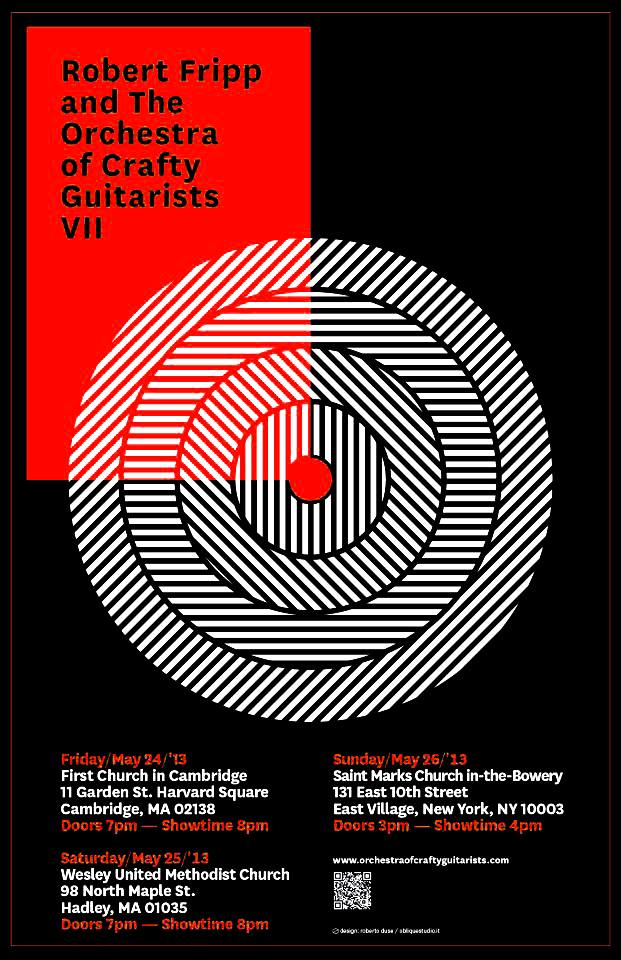
Robert Fripp and the Orchestra of Crafty Guitarists VII
Special Performance Project
Sunday May 26
Saint Marks Church in-the-Bowery
131 East 10th Street
New York, NY 10003
Doors: 3pm
Showtime: 4pm
What is The Orchestra Of Crafty Guitarists?
One possible answer is a lot of people making a lot of noise with guitars. Sometimes they even perform in public, as in Spain, Italy, Argentina, and in the USA, in places like Hadley, Boston, Seattle and New York City.
Another possible answer is a specialized study in the self-organizing properties of complex wholes. How does Intelligence act in and through many individuals, coming together as one? What if a high level of Conscious or Creative Intelligence needed to enter this world, what kind of body or vehicle would it need?
The global challenges we face, to be addressed by current and following generations, are beyond the capacity of individuals to meet. Solutions are more likely to be found in groups and networks than in the efforts of individuals acting alone.
The quality of solution required, to problems now of global proportion, is creative; that is, at the level of genius. The solitary, individual genius is, by definition, solitary and individual. The question, then, is how may we cultivate and develop group genius?
Come share in the spectacle that is the Orchestra of Crafty Guitarists!
Get tickets HERE
09 MAY 13
A MUSICAL SACRIFICE: New York Times Critics' Pick
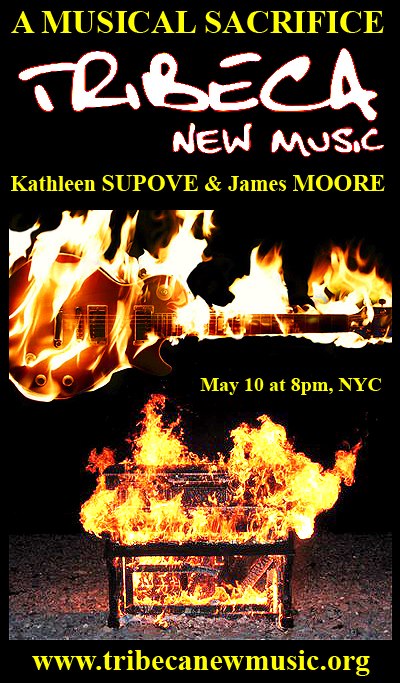
A MUSICAL SACRIFICE
Kathleen Supove, piano & James Moore, guitar
TRIBECA NEW MUSIC 2013 FESTIVAL
Friday, May 10 at 8pm
http://tribecanewmusic.org/a-musical-sacrifice/index.html
Streaming live: http://littledoglive.com/LittleDogLive/TNM.html
Program:
Joshua Lopes - Boots for the Stouthearted
Jacob TV - Saudade
Daniel Felsenfeld - Golliwog Agonistes (from Cakewalking)
Florent Ghys - Bouquet Garni
Lisa R. Coons - A Quiet Struggle
Patrick Grant - Three Times One Minus One
Terry Riley - Simone's Lullaby
03 MAY 13
SHROOM TRIP OPERA by Joseph Keckler - BBC America Video
Here is a video of an aria from April's month-long run of "I AM AN OPERA" at Dixon Place. Joseph will appear on BBC America's "The Nerdist" on Saturday, May 4th, at 10 PM EST.
28 APR 13
Tribeca New Music 2013 Festival
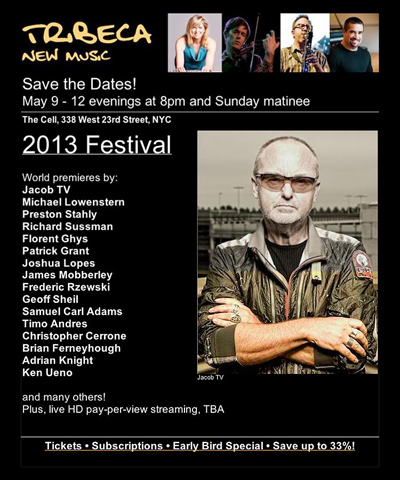
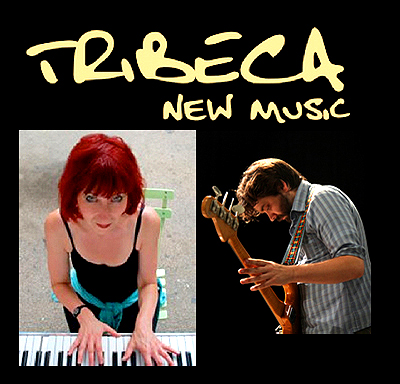
"Three Times One Minus One"
a world premiere for piano, electric guitar, & pre-recorded track
performed by Kathleen Supove & James Moore's new duo A Musical Sacrifice
Program note: "This work began last year as a solo piece for Robert Fripp's Guitar Circle Course that was called Dude, Where's My Band? and its themes were elaborated on in further sketches until it earned the Beckettian working title of To Find a Form That Accommodates the Mess. A computer meltdown prevented that version's premiere so, it was shelved until another opportunity, this one in fact, would arise. When pressed for a title (for this almost unrecognizable variant) the name of the fictional R&B duo from HBO's Mr. Show seemed perfect for this finalized version for Supove & Moore plus track - Three Times One Minus One.'
More iNFO HERE
25 APR 13
I AM AN OPERA - Last 2 Performances
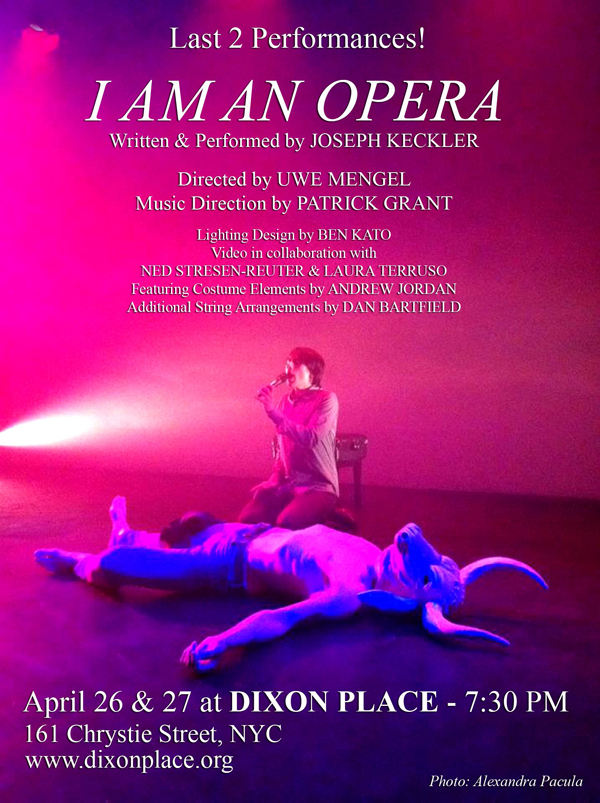
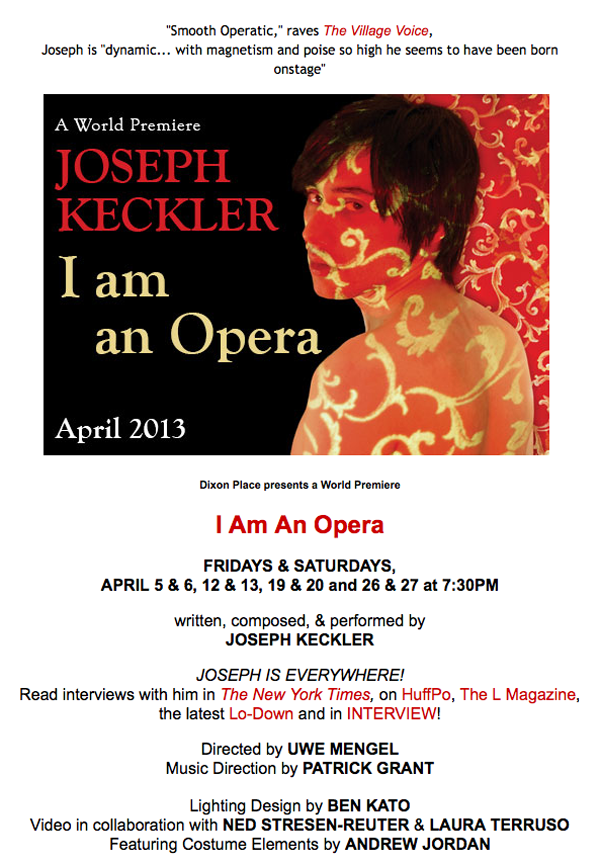
More iNFO HERE: http://www.dixonplace.org/html/Keckler_Apr13.html
09 APR 13
"I Am an Opera" Opens at Dixon Place
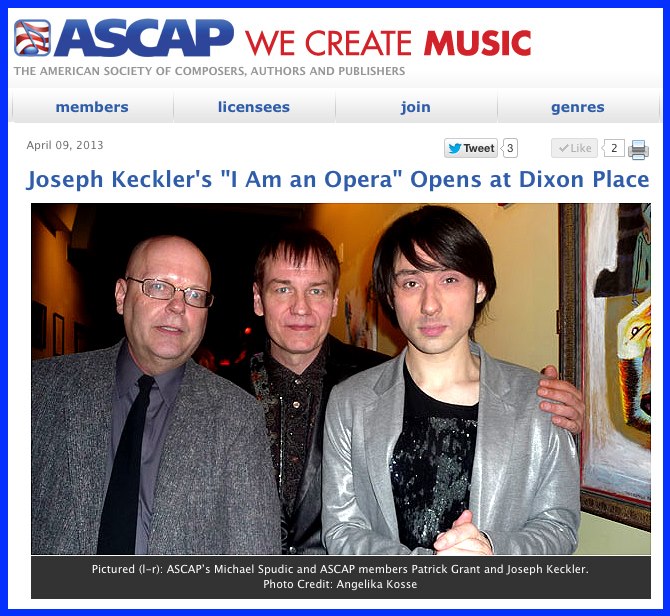
Joseph Keckler's "I Am an Opera" Opens at Dixon Place
A highly subjective musical take on what it means not only to write an opera, but to encompass and even embody one in the modern age of internet witnessed its world premiere launching on April 5th at Dixon Place, New York City’s “Laboratory for Performance.” Written, composed and performed by ASCAP member Joseph Keckler, this conceptual tour-de-force also provided a vehicle for fellow ASCAP member Patrick Grant, collaborating as music producer, with violin arrangements added to the artistic mix by Dan Bartfield. Directed by Uwe Mengel, this highly operatic exposure of Keckler’s inner subconscious, transparent at its most ridiculous and sublime, is propelled through a multi-media series of phantasmagoric tableaux with many an unexpected turn. “I Am an Opera” steadily escalates with its unspoken pronouncement that life, especially at its most primal and personal, is supreme artistic game. Performances will take place on Friday and Saturday evenings throughout the month of April.
http://www.ascap.com/Playback/2013/04/faces-places/concert/joseph-kecklers-i-am-an-opera-opens-at-dixon-place.aspx
02 APR 13
Joseph Keckler in the NY Times
Read the March 31 interview HERE
All part of the build up leading to...
Joseph Keckler
I AM AN OPERA
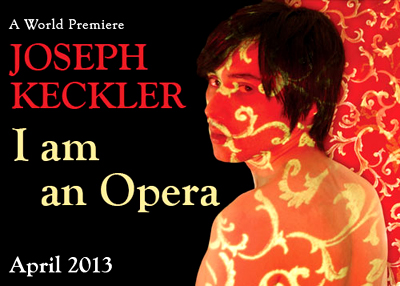
Created and performed by Joseph Keckler
Director - Uwe Mengel
Music Producer - Patrick Grant
Lighting by Ben Kato
Video design w/ Ned Stresen-Reuter & Laura Terruso
Costume elements by Andy Jordan
Add'l Musical Arrangments by Dan Bartfield
DIXON PLACE
161 Chrystie Street, New York, NY
(212) 219-0736
More iNFO HERE
29 MAR 13
PG Interview on the MMiXdown - Backtracks
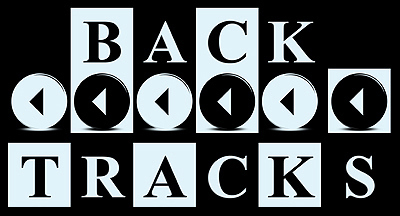
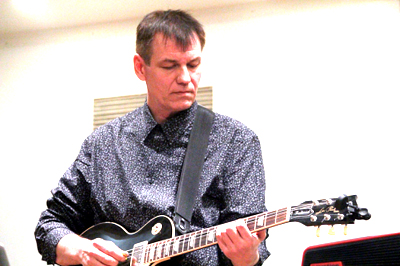
"Ever wonder where Tilted Axes creator Patrick Grant finds inspiration for those infectious riffs? We’ll find out on this edition of BACKTRACKS, when a 4 year old future composer discovers his musical destiny on TV."
Listen to Patrick’s story HERE
25 MAR 13
TILTED EXCESS – Mobile Guitars in the Media
Tilted Axes Detroit: Music for Mobile Electric Guitars
Procession for the First Day of Spring, March 20, 2013
Media Coverage
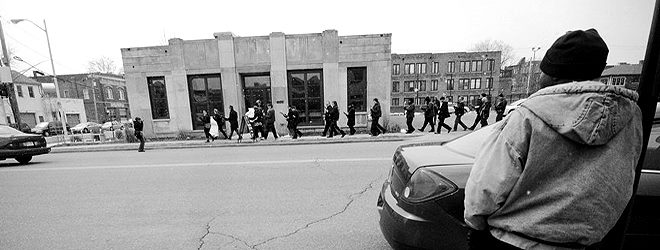
DETROIT FREE PRESS
Names & Faces
Video
FLICKR
Photo set
INSTAGRAM
http://statigr.am/tag/tiltedaxes
METRO TIMES
Cover story
Follow-up
M-LIVE
B&W photo essay
POSITIVE DETROIT
Events
TWITTER
https://twitter.com/search?q=tilted%20axes&src=typd
VIMEO
http://vimeo.com/62288481
WDET
Events
Ann Delisi’s Essential Music
Craig Fahle Show
WKAR
Current State interview
YOUTUBE
http://www.youtube.com/watch?v=ECzmeOcj4Ok
http://www.youtube.com/watch?v=o8apJoLsPFM
http://www.youtube.com/watch?v=y7iitLAjZaQ
XTRA
A blog in Belgium
A blog in Michigan
13 MAR 13
TILTED AXES Cover Story in the Metro Times:
ROCKING IN THE STREETS
The pioneer of the electric guitar procession brings the phenomenon home to Detroit
By Michael Jackman
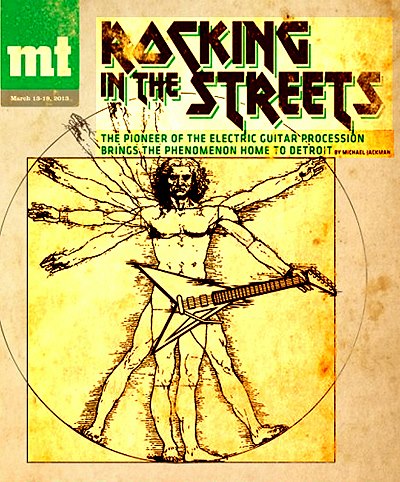
Read it
09 MAR 13
Interview on WDET's "Ann Delisi's Essential Music"
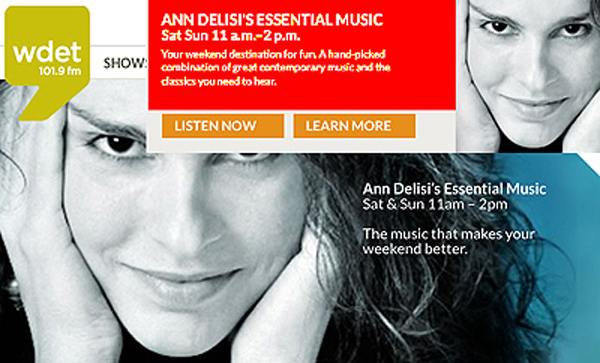
Here's an interview that aired today on WDET's "Ann Delisi's Essential Music" where we describe TILTED AXES DETROIT and put out the call for even more electric guitarists and other participants.
Listen to the interview HERE: http://www.peppergreenmedia.com/TAD-Delisi.mp3
08 MAR 13
New Video of TILTED AXES 2012 NYC by Sergio Ortiz
A new video just sent to me of the Make Music Winter Dec. 21, 2012 performance of TILTED AXES by Sergio Ortiz.
Musicians: Cristian Amigo, Angela Babin, Alex Baxter, Dan Cooper, Nick Didkovsky, David Gould, Randolph Hudson, Daniel Reyes Llinas, Cesare Papetti, Gene Pritsker, Izzi Ramkissoon, Larry Simon, Mark Stewart, & Patrick Grant.
06 MAR 13
TILTED AXES DETROIT in the Detroit Free Press
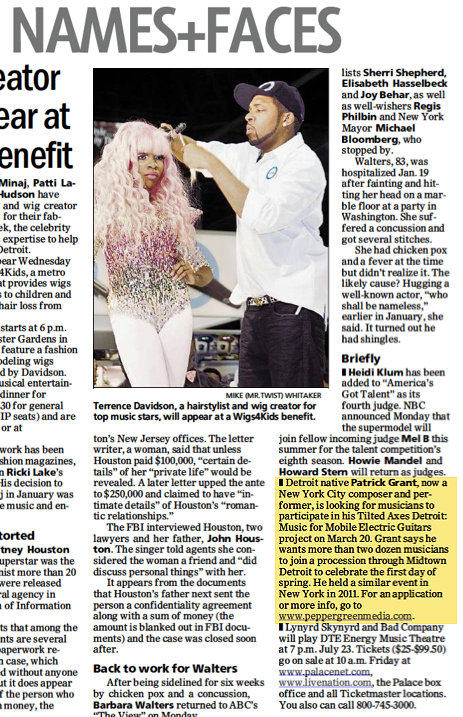
27 FEB 13
TILTED AXES DETROIT: Press Release, Route Map, & Kick-Off Event
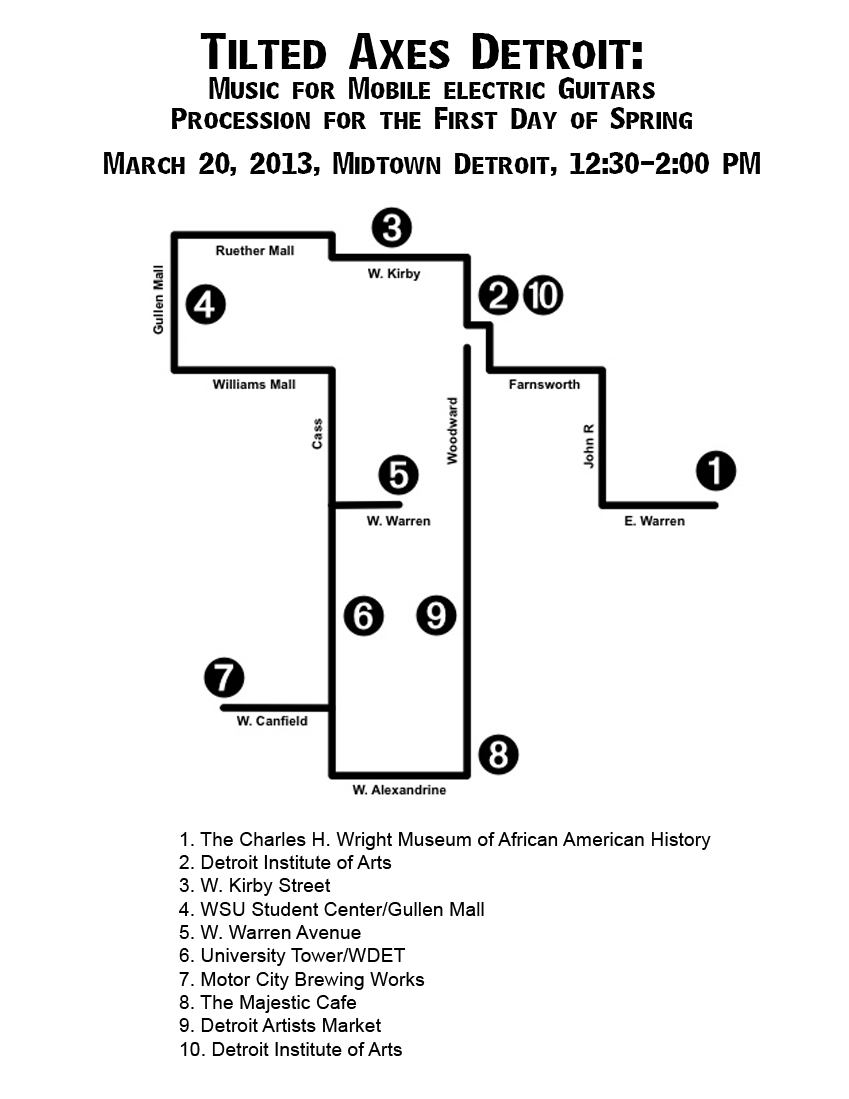
* Want to be a part? Guitarists please click HERE
FOR IMMEDIATE RELEASE
Press contact: TAD2013@peppergreenmedia.com
Download the PDF press release HERE
Web page: http://www.peppergreenmedia.com/TAD2013.html
In celebration of the first day of spring on March 20, Detroit-born NYC composer and performer Patrick Grant will create Tilted Axes Detroit: Music for Mobile Electric Guitars, a procession of over two dozen musicians that will move its way through Midtown Detroit with stops at key locations between 12:30 and 2:00 PM. (See map above)
The project is an ensemble made up of local musicians, in this case Detroit’s which, through preparation and rehearsal at the Charles H. Wright Museum of African American History, will perform a variety of music created by Grant that is to be played in processional and stationary formations, much of it created specifically for the event. While there will be solos from local musicians that will be showcased, the overall musical message of the event is that of a unified ensemble made up of talent that comes from diverse backgrounds.
“I’ve been hoping to bring a musical project back to my hometown for some time now,” says Grant. “It seems like we really hit on something with the Tilted Axes project and it seemed to be the perfect thing to do in Detroit. It’s a well-known fact that Detroit has created numerous musical talents, far more than most. I’m positive that the music we’ll make will sound magnificent and like no other.“
The musicians will be accompanied by percussion and play their instruments through small but powerful mini-amps they are given that clip onto their belts. The procession has banner carriers and performers that hold up signs from which the musicians and the public are aware of name and purpose of each music section. More importantly, this aspect informs any of the unsuspecting public that it is the first day of Spring and that they are invited to celebrate it and rock out with Tilted Axes Detroit.
The Tilted Axes project began as a Winter Solstice event for Make Music New York in 2011. Its name derives from the axial tilt of the Earth, the causes our seasonal changes, as well as incorporating the word “axe,” the well-known nickname for the electric guitar.
One of these events will be a solo performance & kick-off event by Patrick Grant at PJ’s Lager House, 1254 Michigan Ave. in Detroit, on Sunday, March 17 at 6:00 PM. Admission to the public is $5.
Also, Grant will be making appearances on WDET 101.9 FM and will be featured in the Metro Times leading up to Tilted Axes Detroit.
Interested musicians and other participants are asked to visit the project’s web page at: http://www.peppergreenmedia.com/TAD2013.html (applicants please click HERE). There they will find out information as to what will be required of them and how to apply. The deadline for applicants is March 14. The public can also go to this page for further event information, a procession map, and other events leading up to this project.
Tilted Axes Detroit is sponsored by Midtown Detroit Inc. and Peppergreen Media with the support of our partners Cafagna Arts, The Charles H. Wright Museum of African American History, The Detroit Artists Market, The Detroit Institute of Arts, The Majestic Theater, The Metro Times, The Motor City Brewing Works, PJ’s Lager House, Wayne State University, and WDET 101.9 FM Radio.
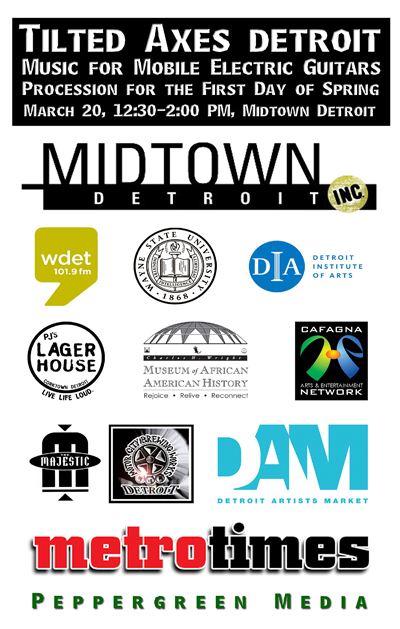
05 FEB 13
TILTED AXES DETROIT: Music for Mobile Electric Guitars - March 20, 2013


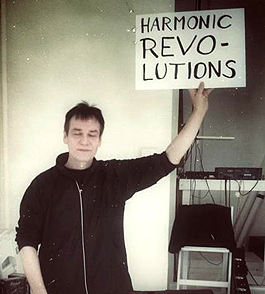
It's official: Tilted Axes comes to Detroit on March 20th, the first day of Spring. Stay tuned for more details coming February 25 HERE
03 JAN 13

On January 25 at 7:30 PM, Con Edison Composer-in-Residence Patrick Grant presents a concert of works created and developed during his Fall 2012 residency at Turtle Bay Music School. Admission is free.
Grant performs excerpts from The Velcro Variations (2012) for electric guitar, keyboard, & electronics. Using the tools of classical compositional rigor and in-the-moment improvisation, the piece is a multi-movement journey that deconstructs and rebuilds rock and dispels the myth of the guitar hero. On Tilted Axes: Music for Mobile Electric Guitars, he presents material created for this year’s Make Music Winter NYC procession that was performed on the streets of Lower Manhattan on Dec. 21st. For this performance he will be joined by some of the musicians from that event and will roam the space around the audience in “…a moving, polyphonic sound cloud layered in compelling, electric rhythms.” The program includes Seven Years at Sea (Sept ans sur mer) and Breaking Butterflies Upon a Wheel.
Participating musicians include Cristian Amigo, Angela Babin, Dan Cooper, Randolph Hudson III, Daniel Reyes Llinas, Cesare Papetti, & Gene Pritsker.
Complete iNFO HERE
****************************************
2015 nEWS Items
2014 nEWS Items
2013 nEWS Items
2012 nEWs Items
2011 nEWs Items
2010 nEWS Items
2009 nEWS Items
2008 nEWS Items
2007 nEWS Items
2006 nEWS Items
2005
nEWS Items
2004
nEWS Items
2003
nEWS Items
2002
nEWS Items
All rights reserved © Patrick Grant / Strange Music Inc.™ / sTRANGEmUSIC™
Strange Music, StrangeMusic, and sTRANGE mUSIC are all trademarks and service marks of Strange Music Inc.
Return to the Strange Music Inc. homepage